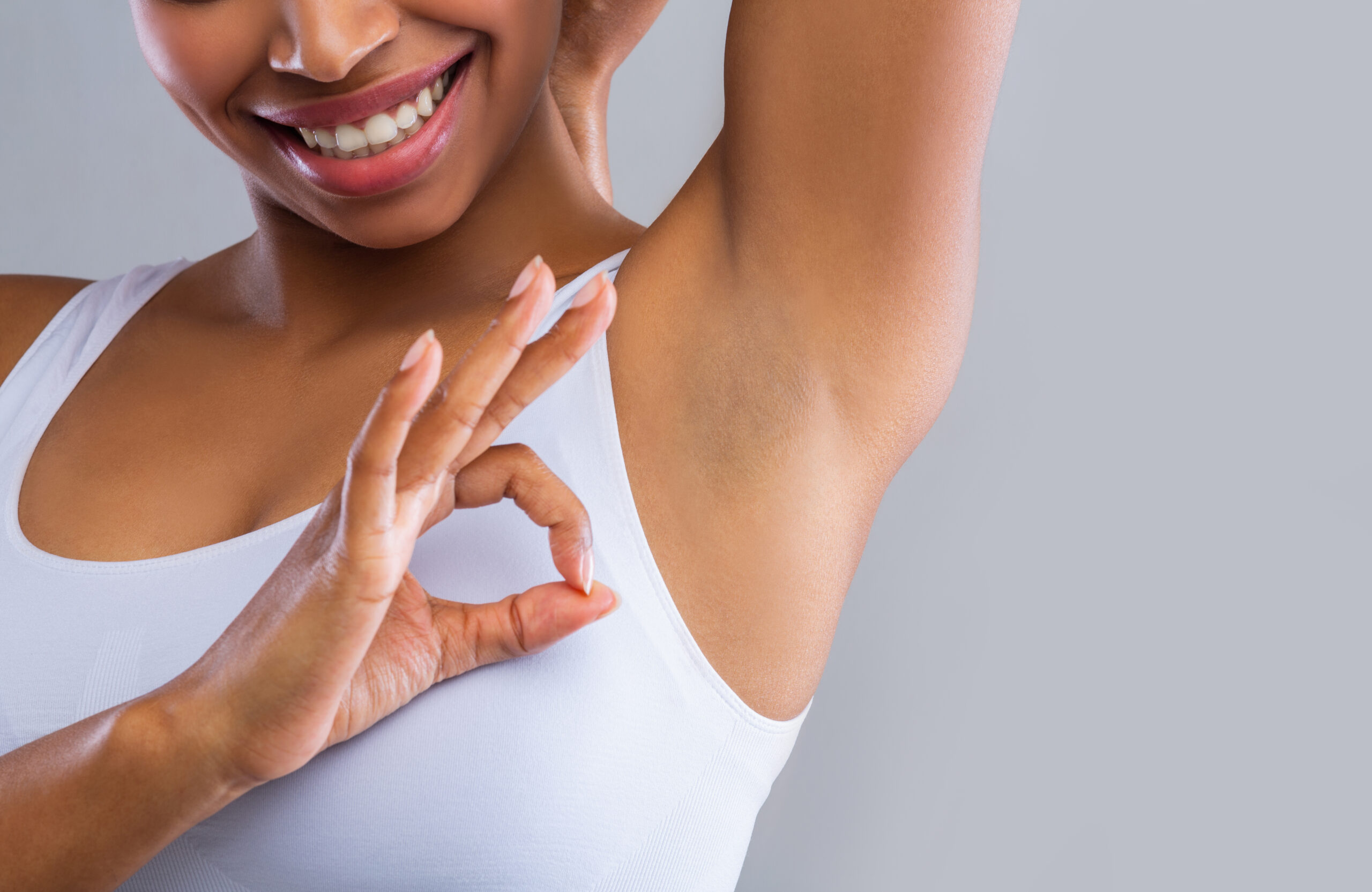What is Hyperhidrosis?
Hyperhidrosis is a medical term used to describe excessive sweating that goes beyond what is necessary to regulate body temperature. People with hyperhidrosis experience sweating that is disproportionate to their environmental conditions or level of physical activity. It can significantly impact a person’s quality of life, causing embarrassment, discomfort, and even emotional distress. Many clinical studies have even demonstrated correlation between excessive sweating and increased risk of fungal infections, such as athlete’s foot or tinea pedis. Patients with hyperhidrosis can also be more vulnerable to skin conditions such as warts & boils, increased body odor, and even worsening of the skin barrier dysfunction seen in Eczema.
The most common form of hyperhidrosis typically affects specific areas of the body, such as the:
- Underarms (axillary hyperhidrosis)
- Palms of the hands (palmar hyperhidrosis)
- Soles of the feet (plantar hyperhidrosis)
- Face
The excessive sweating often occurs bilaterally and symmetrically.
How Does Botox Treat Hyperhidrosis?
The discovery of Botox’s effectiveness in treating hyperhidrosis was somewhat serendipitous. In the 1990s, Botox was already being used for its muscle-relaxing properties in various medical conditions. During these treatments, some patients coincidentally noticed a significant reduction in sweating in the treated areas.
The initial research and clinical trials showed promising results. Botox was found to effectively reduce sweating by blocking the release of acetylcholine, a neurotransmitter responsible for stimulating sweat gland activity. By inhibiting acetylcholine release, Botox interrupts the signals that trigger excessive sweating, especially in the underarms, palms of the hands and soles of the feet. According to the International Hyperhidrosis Society, people who receive Botox injections have found excessive sweating decreases by more than 85%. Today, Allergan’s Botox is the only FDA-approved neuromodulator for underarm primary hyperhidrosis. When used for other areas of excessive sweating, it is an off-label use, yet can be an equally effective treatment.
What Does the Procedure Involve?
During a visit, l identify the areas of excessive sweating and administer a series of small injections of Botox directly into the skin. The overall procedure is relatively quick, taking anywhere between 10-15 minutes. Topical lidocaine or ice is typically applied to the treatment areas prior to the series of small injections, ensuring patient comfort during the procedure. The exact number of injections and the dosage depends on the extent and severity of the hyperhidrosis. While vigorous exercising should be avoided for the remainder of the day after the procedure, there is little to no downtime or recovery.
Botox for hyperhidrosis provides temporary relief from excessive sweating. Initial effects can be noticed within 3-4 days. Depending on individual physiology and lifestyle, as well as the area being treated, the results can last for up to six months. Over time, as the effects of Botox wear off, the sweating gradually returns, and repeat treatments are necessary to maintain the results. On average, patients experience more significant treatment effects after undergoing their second or third sessions, so consistent treatment plans must be made accordingly.
Don’t Sweat It, We Can Prevent It!
Botox injections for hyperhidrosis have been found to be safe, efficient & effective in reducing excessive sweating. Many of my patients have significantly benefited from this unique treatment, experiencing improvements in their overall health, wellness, and wellbeing.


